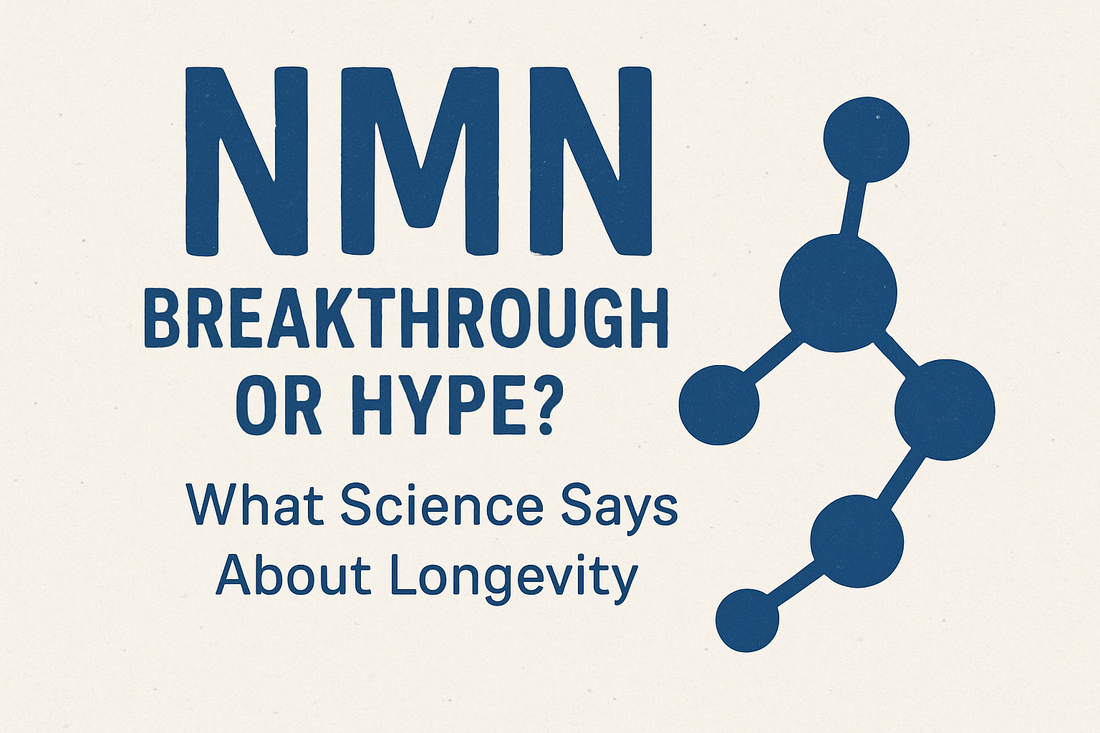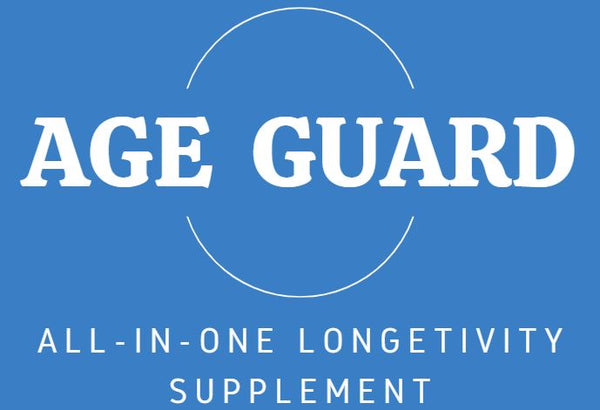
NMN Breakthrough or Hype? What Science Says About Longevity
Share
Understanding NMN: The Molecular Foundation of Cellular Energy
Nicotinamide mononucleotide represents a pivotal precursor in the biosynthesis of nicotinamide adenine dinucleotide (NAD+), a coenzyme fundamental to cellular metabolism and energy production. This nucleotide derivative has captured scientific attention due to its potential role in mitigating age-related cellular decline. NMN functions as an intermediary compound in the salvage pathway, facilitating the replenishment of NAD+ levels that naturally diminish with advancing age.
The molecular architecture of NMN enables efficient cellular uptake through specialized transporters, particularly the Slc12a8 transporter identified in recent research. Unlike other NAD+ precursors, NMN demonstrates superior bioavailability and can traverse cellular membranes without requiring preliminary conversion. This characteristic positions NMN as a potentially more efficacious intervention compared to traditional niacin derivatives.
The Science Behind NMN and Longevity Research
Clinical Evidence and Human Studies
Emerging clinical investigations reveal compelling insights into NMN's physiological effects. A landmark 2021 study published in Science demonstrated that NMN supplementation increased muscle insulin sensitivity and enhanced aerobic capacity in healthy middle-aged adults. Participants receiving 250mg daily for ten weeks exhibited measurable improvements in metabolic parameters without adverse effects.
Subsequent research has expanded our understanding of NMN's multifaceted benefits. A 2022 randomized controlled trial involving 80 participants aged 40-65 showed significant improvements in sleep quality, fatigue reduction, and physical performance metrics. These findings suggest NMN's influence extends beyond mere cellular energy enhancement to encompass broader physiological optimization.
"NAD+ depletion is a hallmark of aging, and restoring its levels through NMN supplementation represents a promising therapeutic avenue for age-related decline." - Dr. David Sinclair, Harvard Medical School
Mechanistic Pathways and Cellular Benefits
NMN exerts its longevity effects through multiple interconnected pathways. Primary mechanisms include sirtuin activation, particularly SIRT1 and SIRT3, which regulate mitochondrial biogenesis and cellular stress response. These deacetylase enzymes require NAD+ as a cofactor, making adequate NAD+ levels crucial for optimal function.
Additionally, NMN influences poly(ADP-ribose) polymerases (PARPs), enzymes involved in DNA repair mechanisms. Enhanced PARP activity correlates with improved genomic stability and reduced cellular senescence markers. The compound also modulates circadian rhythm regulation through its interaction with clock genes, potentially explaining observed improvements in sleep patterns.
Age Guard's Comprehensive Longevity Solution
While NMN demonstrates significant promise as a longevity intervention, optimal anti-aging benefits emerge from synergistic compound combinations rather than isolated supplementation. Age Guard's scientifically formulated longevity supplement addresses this need by combining NMN with nine complementary ingredients at clinically effective dosages.
The formulation includes collagen peptides for structural protein support, trimethylglycine (TMG) for methylation pathway optimization, and spermidine for autophagy enhancement. This comprehensive approach targets multiple aging pathways simultaneously, providing health-conscious adults with a streamlined solution for cellular resilience and vitality maintenance.
Each ingredient undergoes rigorous quality testing to ensure potency and purity, addressing the common concern of ineffective multi-ingredient products in the longevity market.
Separating Scientific Evidence from Marketing Hyperbole
Limitations and Realistic Expectations
Despite promising research outcomes, NMN supplementation requires realistic expectation management. Current human studies remain limited in scope and duration, with most investigations spanning weeks rather than years. Long-term safety profiles and optimal dosing protocols require further elucidation through extended clinical trials.
Individual response variability represents another consideration. Factors including baseline NAD+ levels, genetic polymorphisms affecting NAD+ metabolism, and concurrent health conditions influence supplementation outcomes. Some individuals may experience pronounced benefits while others observe modest improvements.
| Study Duration | Participants | Primary Outcomes | Statistical Significance |
|---|---|---|---|
| 10 weeks | 25 participants | Insulin sensitivity improvement | p < 0.05 |
| 12 weeks | 80 participants | Physical performance enhancement | p < 0.01 |
| 6 weeks | 42 participants | Sleep quality improvement | p < 0.05 |
Quality and Bioavailability Considerations
NMN supplementation efficacy depends heavily on product quality and manufacturing standards. Pharmaceutical-grade synthesis ensures molecular stability and prevents degradation that compromises bioactivity. Third-party testing for heavy metals, microbial contaminants, and potency verification remains essential for consumer safety.
Sublingual administration methods and enteric coating technologies may enhance absorption rates, though research comparing delivery methods remains limited. Storage conditions significantly impact NMN stability, with refrigeration often recommended to maintain potency over extended periods.
Practical Implementation and Safety Profile
Dosage Protocols and Timing
Current research suggests optimal NMN dosages range from 250-500mg daily, typically administered in morning hours to align with circadian NAD+ fluctuations. Higher dosages haven't demonstrated proportional benefit increases and may unnecessarily burden detoxification pathways.
Cycling protocols remain unexplored in human studies, though some researchers theorize intermittent supplementation might prevent adaptive responses that could diminish long-term efficacy. Empty stomach administration may optimize absorption, though individuals with gastric sensitivity should consider food co-administration.
Potential Side Effects and Contraindications
Clinical trials report minimal adverse effects associated with NMN supplementation. Occasional mild gastrointestinal discomfort represents the most common complaint, typically resolving with continued use or dosage adjustment. No serious adverse events have been documented in published human studies.
Theoretical concerns exist regarding NMN's interaction with certain medications, particularly those affecting cellular metabolism. Individuals with diabetes should monitor blood glucose levels closely, as NMN may enhance insulin sensitivity. Consultation with healthcare providers remains advisable for those with existing medical conditions.
- Monitor blood glucose levels if diabetic
- Start with lower dosages to assess tolerance
- Avoid evening administration to prevent sleep disruption
- Store products in cool, dry conditions
- Choose third-party tested supplements
Future Directions and Research Priorities
The longevity research landscape continues evolving as scientists investigate NMN's therapeutic potential across diverse populations and age groups. Upcoming studies will examine combination therapies, dose-response relationships, and long-term safety profiles. Biomarker development for aging assessment will enable more precise efficacy measurements.
Personalized medicine approaches incorporating genetic testing may optimize individual supplementation protocols. Understanding which populations benefit most from NMN intervention could revolutionize preventive aging strategies and improve resource allocation in longevity medicine.
The convergence of NMN research with other longevity interventions, including caloric restriction mimetics and exercise protocols, promises comprehensive anti-aging strategies. This integrative approach aligns with emerging understanding that successful longevity interventions require multifaceted therapeutic approaches rather than single-compound solutions.
